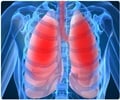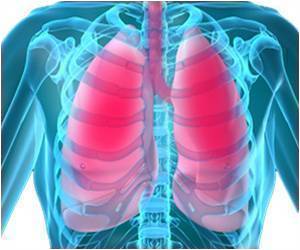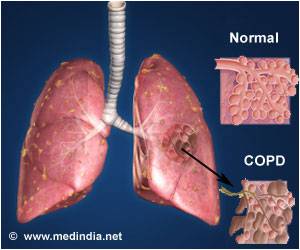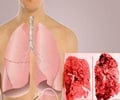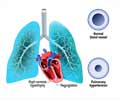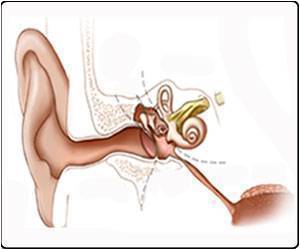An innovative risk score tool has been developed to effectively predict future risk of hospitalization for COPD patients, reveals a new study.

‘The new risk-score tool can help clinicians better care for high-risk COPD patients to avoid risk of hospitalization.’





Researchers say the new Laboratory-based Intermountain Validated Exacerbation tool, known as the LIVE Score, may help clinicians better care for COPD patients by predicting high-risk patients who may benefit from early and specific interventions to avoid hospitalization.COPD is the name for a group of diseases, primarily emphysema and chronic bronchitis, that are chronic inflammatory lung diseases that cause obstructed airflow from the lungs that affect more than 15 millions Americans, according to the Centers for Disease Control and Prevention.
Acute exacerbation of COPD is a sudden worsening of COPD symptoms (shortness of breath, quantity and color of phlegm) that typically lasts for several days, and in severe situations can lead to hospitalization. Symptoms can be exacerbated, or worsened, by airborne irritants like secondhand smoke, dust, pollen, fumes or air pollution. During a flare up, patients may end up in their doctor's office, the emergency department, or require hospitalization.
In the retrospective study, researchers found the majority of patients who experienced COPD exacerbations were in the LIVE risk-score model's two highest risk groups. Conversely, patients in the risk model's lowest risk group, fewer patients had exacerbations.
"We believe the ability to effectively identify these patients and intervene earlier in the course of a COPD exacerbation may help provide them with a higher quality of life, and potentially reduce medical costs associated with preventable hospital admissions," said principal investigator Denitza Blagev, MD, a pulmonary and critical care physician at Intermountain Medical Center and medical director for quality for Intermountain Healthcare . Results of the study of the LIVE Score model will be presented at the American Thoracic Society's annual international conference in San Diego on Monday, May 21, at 9:15 a.m, PDT.
Advertisement
At first, COPD may cause no symptoms or only mild symptoms. As the disease gets worse, symptoms usually become more severe. They include: a cough that produces mucus, shortness of breath (specially with physical activity), wheezing, and chest tightness.
Advertisement
"Although we currently think about COPD as a single disease, the course and progression of the disease is variable among patients," said Dr. Blagev. "It's not only based on the severity of their COPD and lung function, but also on the number and variety of other medical problems a patient may have."
The new LIVE scoring tool allows for improved COPD patient care on a health system level by identifying when earlier interventions may prove useful, while educating patients and families on what the future may look like for an individual patient diagnosed with COPD.
Source-Eurekalert

